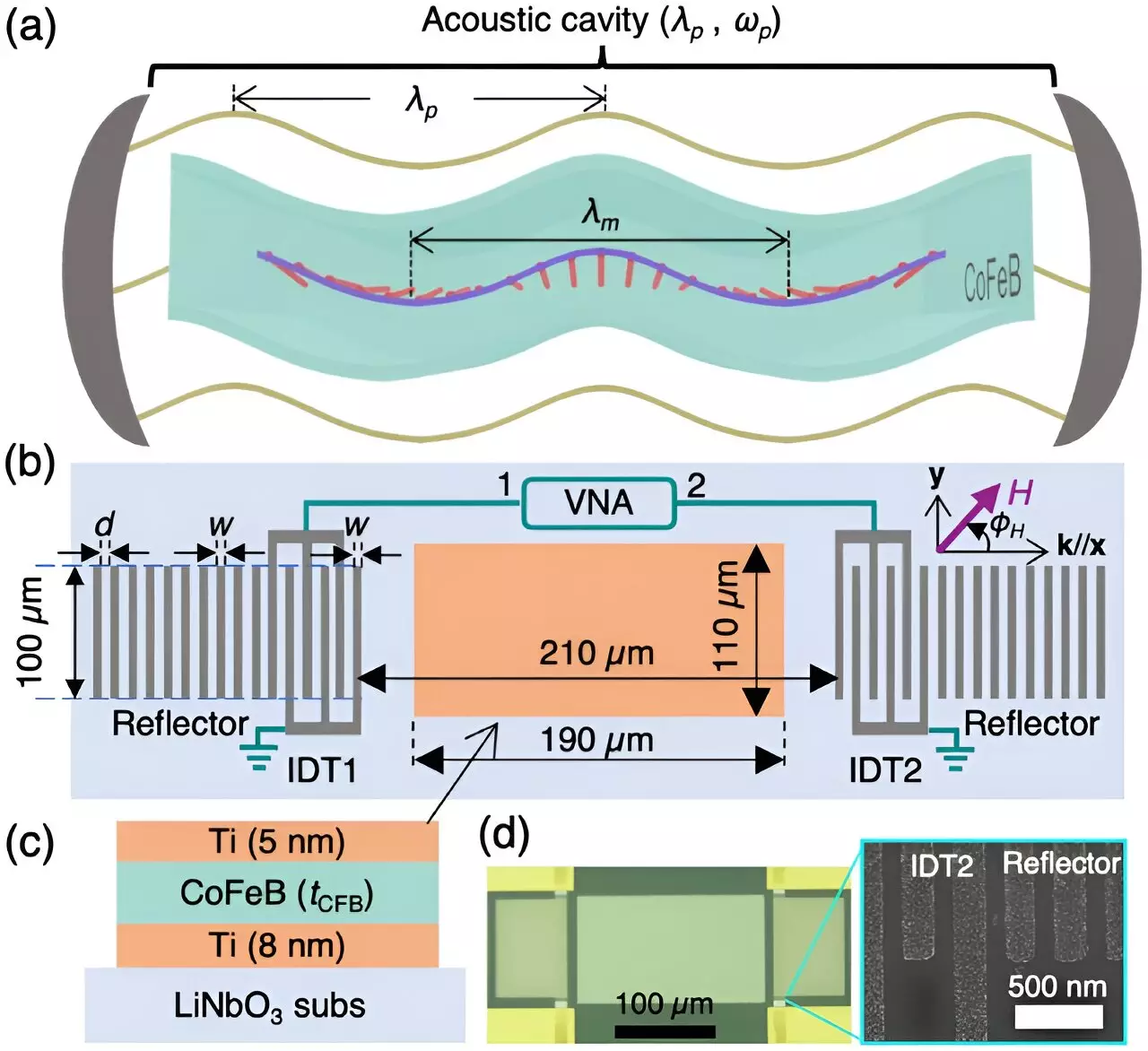In a groundbreaking study led by researchers from the RIKEN Center for Emergent Matter Science in Japan, a significant milestone has been achieved in the field of information processing. By establishing a strong coupling between magnons and phonons in a thin film at room temperature, the team has paved the way for the development of hybrid wave-based devices that could revolutionize the way we store and manipulate information.
The majority of computing devices in use today rely on the movement of electric charge, specifically electrons. However, there are inherent limitations to this approach, including the speed at which electrons can travel and the heat generated during their movement, which results in energy losses and environmental concerns. As a result, researchers are exploring alternative methods that harness wave-like forms of energy such as sound, light, and spin, with the potential to create devices with lower energy losses and increased efficiency.
The research, recently published in Physical Review Letters, focused on the coupling of magnons and phonons – wave-like phenomena that represent the collective excitation of spins and acoustic waves, respectively. By combining these two forms of energy in a thin film, the team was able to create a novel hybrid state that holds great promise for information processing applications.
According to Yunyoung Hwang, the first author of the study, the synergistic interaction between magnons and phonons has the potential to revolutionize information and communication technologies. By tightly coupling these two states, the researchers have unlocked a new realm of possibilities for information processing and data manipulation.
While previous attempts to create strong coupling between sound waves and magnets faced challenges due to incompatibility, the research team was able to overcome this obstacle by utilizing shear sound waves. Unlike regular surface sound waves, shear sound waves proved to be a better match for magnets in creating the desired coupling.
The key to the team’s success was the use of a nano-structured surface acoustic wave resonator, which enabled the confinement and enhancement of ultrasound waves in a specific location. This breakthrough allowed for a strong coupling between the surface sound waves and magnets in the resonator, ultimately leading to the successful establishment of magnet-sound coupling in a Co20Fe60B20 film at room temperature.
Looking ahead, the researchers believe that their work will significantly contribute to the study of coherently coupled magnon-phonon quasiparticles. This development could play a crucial role in the advancement of hybrid wave-based information processing devices with minimal energy losses, offering a new paradigm for information storage and manipulation in the digital age.
The successful creation of a strong coupling between magnons and phonons in a thin film represents a major milestone in the field of information processing. By harnessing the power of wave-like forms of energy, researchers are paving the way for the development of highly efficient and innovative hybrid wave-based devices that could reshape the landscape of modern technology.


Leave a Reply